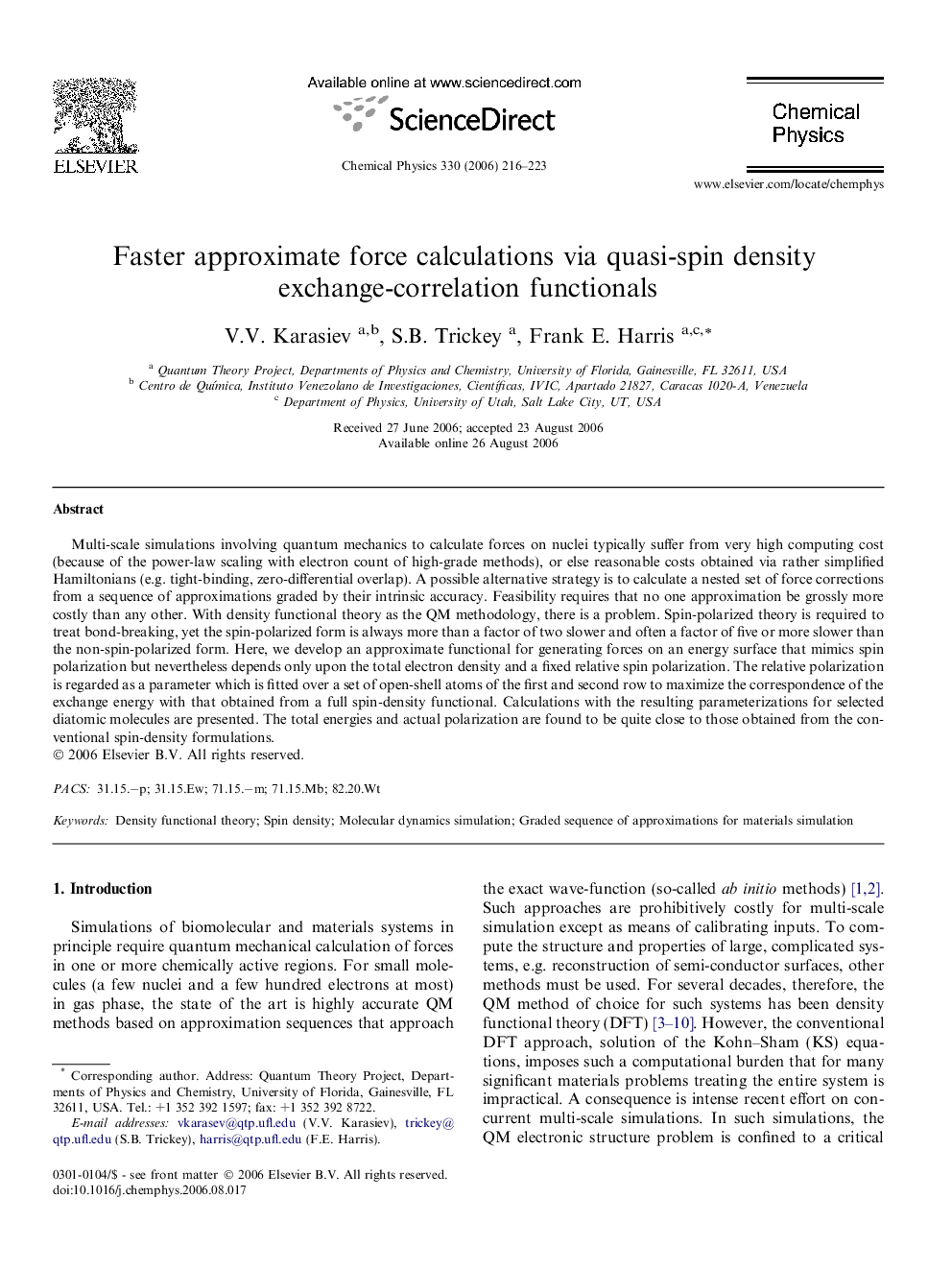| Article ID | Journal | Published Year | Pages | File Type |
|---|---|---|---|---|
| 5376720 | Chemical Physics | 2006 | 8 Pages |
Abstract
Multi-scale simulations involving quantum mechanics to calculate forces on nuclei typically suffer from very high computing cost (because of the power-law scaling with electron count of high-grade methods), or else reasonable costs obtained via rather simplified Hamiltonians (e.g. tight-binding, zero-differential overlap). A possible alternative strategy is to calculate a nested set of force corrections from a sequence of approximations graded by their intrinsic accuracy. Feasibility requires that no one approximation be grossly more costly than any other. With density functional theory as the QM methodology, there is a problem. Spin-polarized theory is required to treat bond-breaking, yet the spin-polarized form is always more than a factor of two slower and often a factor of five or more slower than the non-spin-polarized form. Here, we develop an approximate functional for generating forces on an energy surface that mimics spin polarization but nevertheless depends only upon the total electron density and a fixed relative spin polarization. The relative polarization is regarded as a parameter which is fitted over a set of open-shell atoms of the first and second row to maximize the correspondence of the exchange energy with that obtained from a full spin-density functional. Calculations with the resulting parameterizations for selected diatomic molecules are presented. The total energies and actual polarization are found to be quite close to those obtained from the conventional spin-density formulations.
Keywords
Related Topics
Physical Sciences and Engineering
Chemistry
Physical and Theoretical Chemistry
Authors
V.V. Karasiev, S.B. Trickey, Frank E. Harris,
